If you’ve ever found yourself wondering while you’re chowing down on your Chinese takeout order which of these dishes is the most popular in China, you won’t have to think too hard about it. See, authentic Chinese food is much different than the Western versions that have been tweaked to broaden their appeal and they frankly just don’t eat any of these meals in China.
The Chinese diet back home largely consists of plant-based food with little meat. Chinese-American cuisine, though often delicious, is almost the opposite; sweet, fried, and meat-heavy. We rounded up the most well-known meals that would be completely unfamiliar in China. (Plus, check out 6 ‘Mexican’ Dishes No One Eats in Mexico.)
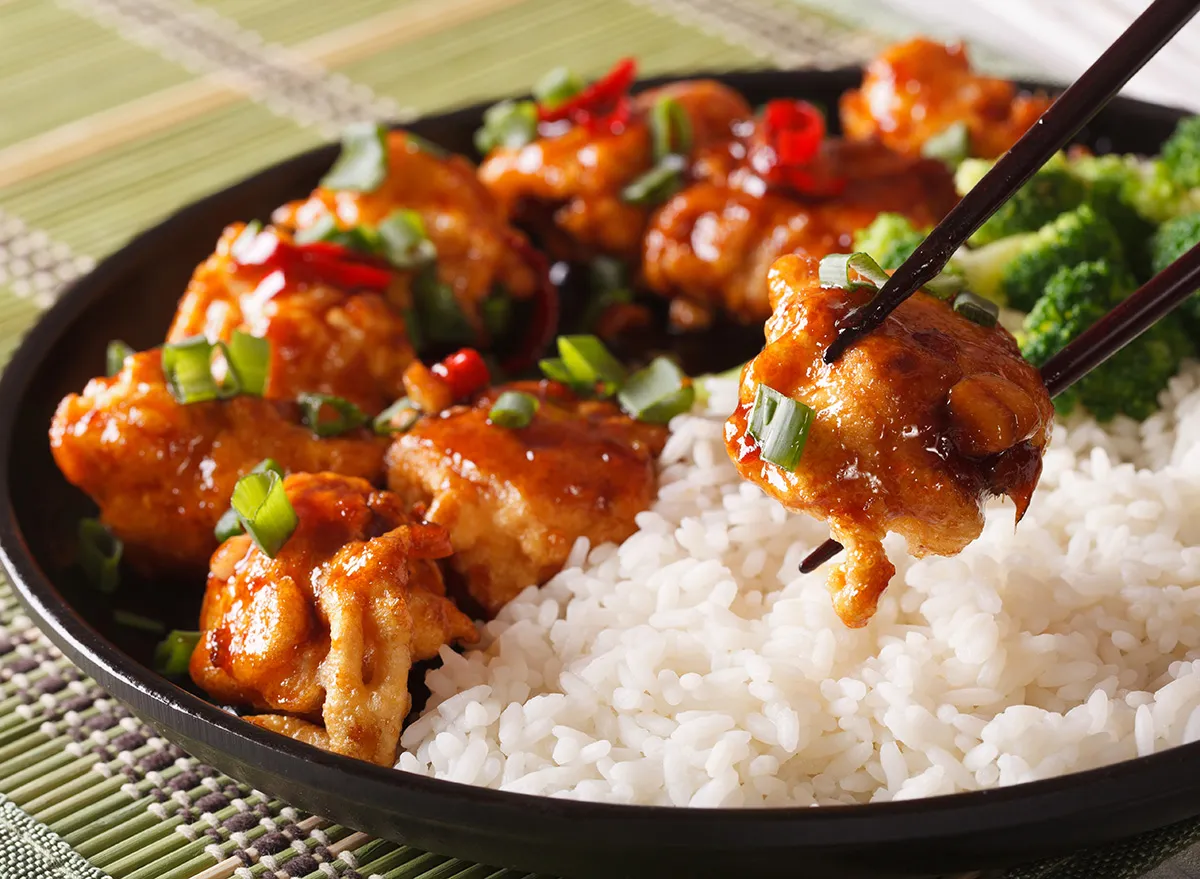

A huge percentage of Chinese restaurants in the U.S. offer a dish entitled General Tso’s chicken. This sweet and spicy fried chicken dish is perhaps the most quintessential of American Chinese dishes. Although there is no recorded connection to him, it’s named after General Tso Tsung-tang, a Qing dynasty general and statesman. Order it in a restaurant and you’re signing up for a battered, fried dish containing up to 1,300 calories, 11 grams of saturated fat, and 3,200 milligrams of sodium. If you think that sounds bad, you’re right: It exceeds a person’s entire daily recommended sodium intake, half of the recommended caloric intake, and 1/3 to 1/2 of the recommended saturated fat limit. And while it can trace some roots to Hunan cooking, the version Americans recognize was invented in 1970s New York. Authentic Chinese? Fuggedaboutit.
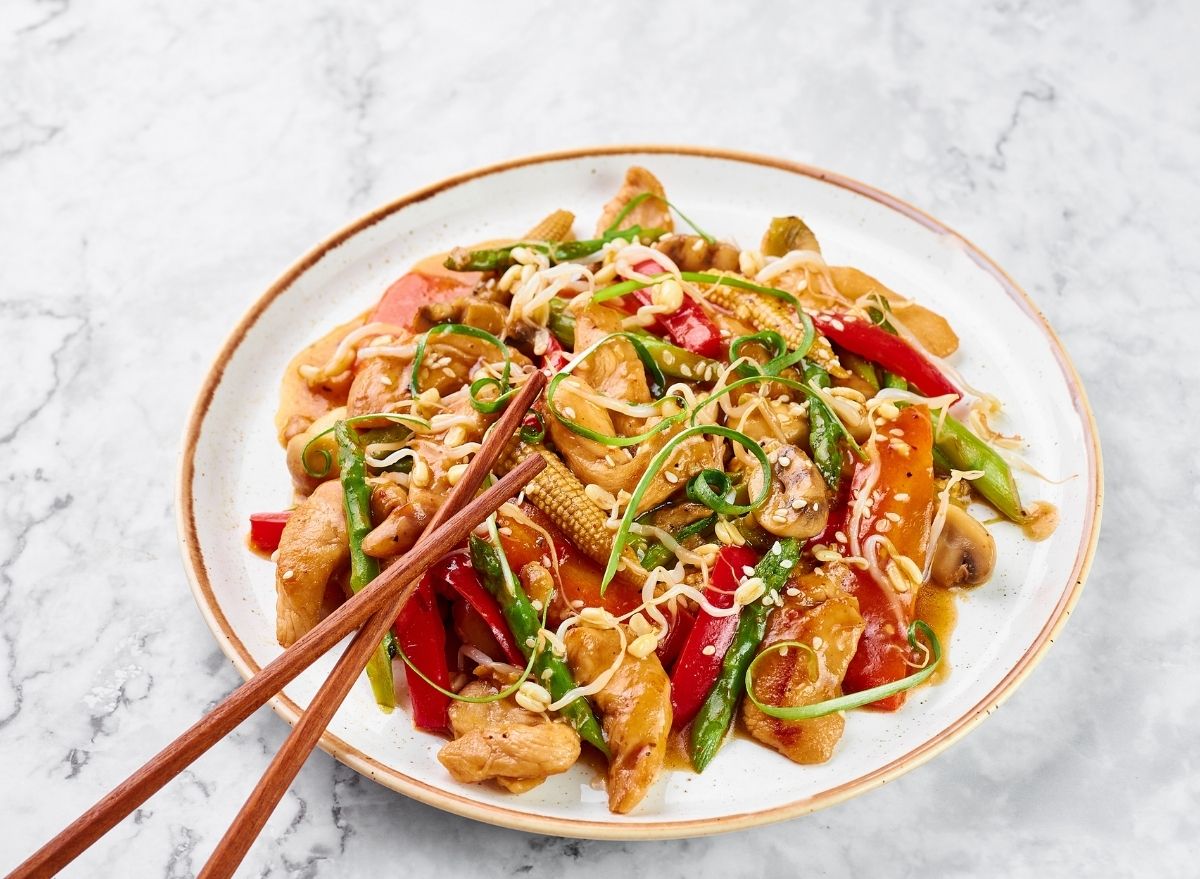

Before General Tso’s Chicken became a staple, Chop Suey was the “Chinese” dish that most Americans could name. According to the History Channel, the dish’s origins can be traced to the California Gold Rush, when it was invented by enterprising Chinese restaurateurs to satisfy a bunch of drunken miners. The chefs scraped together leftovers, doused them in soy sauce, and presented this as “shap sui,” which means “mixed pieces” or “odds and ends” in Chinese. Today, unless you skip the sauce, you’re signing up for a ton of sodium. Chinese restaurants are infamous for adding too much salt to their food, says Lori Zadini, RD, CDE, of the Academy of Nutrition.
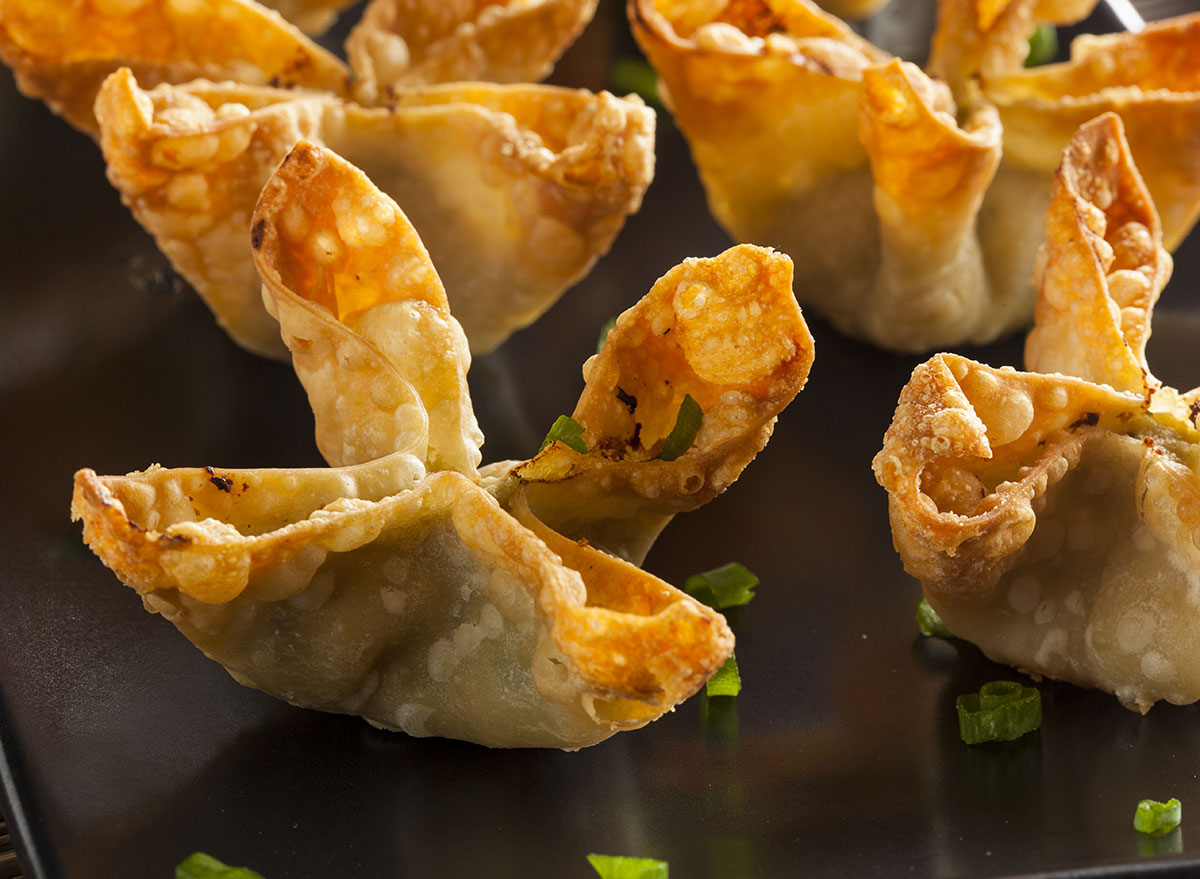

Crab wontons are deep-fried dumplings filled with crabmeat and cream cheese, which does indeed come from the east—Philadelphia, to be exact. It’s not really a thing in China as there are many people living there who are lactose intolerant. Another clue that these things aren’t exactly authentic? The dish is also called Crab Rangoon. Rangoon is the former capital of Burma (now Myanmar), which is very much not in China. Although crab is a good source of protein and zinc, that’s neutralized by the fat in the cream cheese and the process of deep-frying the whole package. If you order the Crab Wontons appetizer at PF Chang’s, you’re signing up for 37 grams of fat (8 of them saturated), and 630 mg of sodium. That’s a much fat as one-and-a-third Big Macs and as much sodium as two orders of large fries!
READ RELATED: What happened to Archie Battersbee? accident update, Aged 12, What about his family?
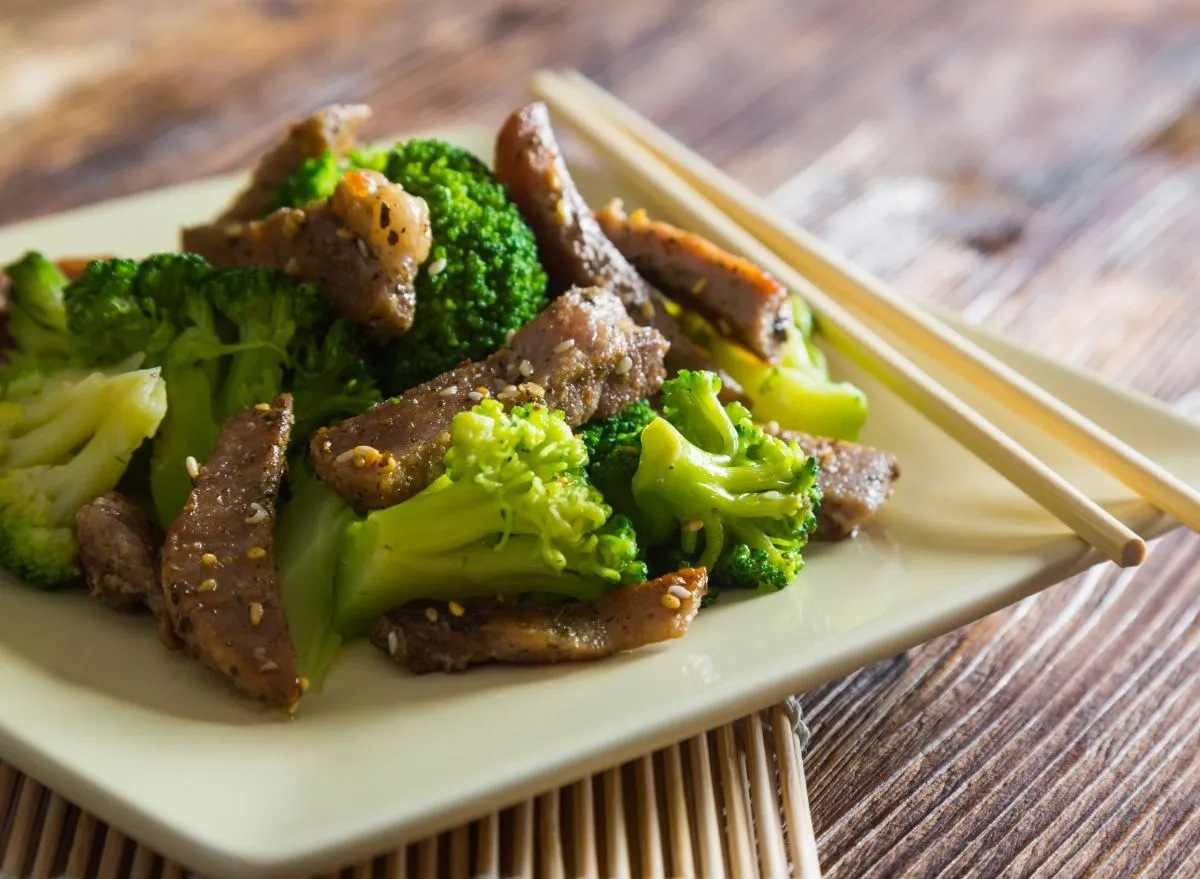

If the beef is lean and derived from grass-fed cows, beef and broccoli provide significant nutrition. Beef contains protein, B vitamins, and an assortment of minerals, while broccoli is packed with vitamins and anti-cancer compounds. (One study found that men who ate three or more half-cup servings of broccoli per week had a 41 percent decreased risk for prostate cancer compared to men who ate fewer than one serving per week.) A study of Chinese dinner tables reveals that their version of broccoli is a leafy green, not the florets introduced to the US by Italian immigrants in the last 1800s. That’s a technicality, but it doesn’t make the versions served in Chinese restaurants healthy. They can top 900 calories—almost 50% of your recommended daily calorie allowance—and unless the beef is grass-fed (ask; it likely isn’t), you’re ingesting hormones and pollutants that can lead to belly-fat storage. Instead, stay home and make recipes from our guide to healthy Chinese food—there are hundreds of possible combinations!
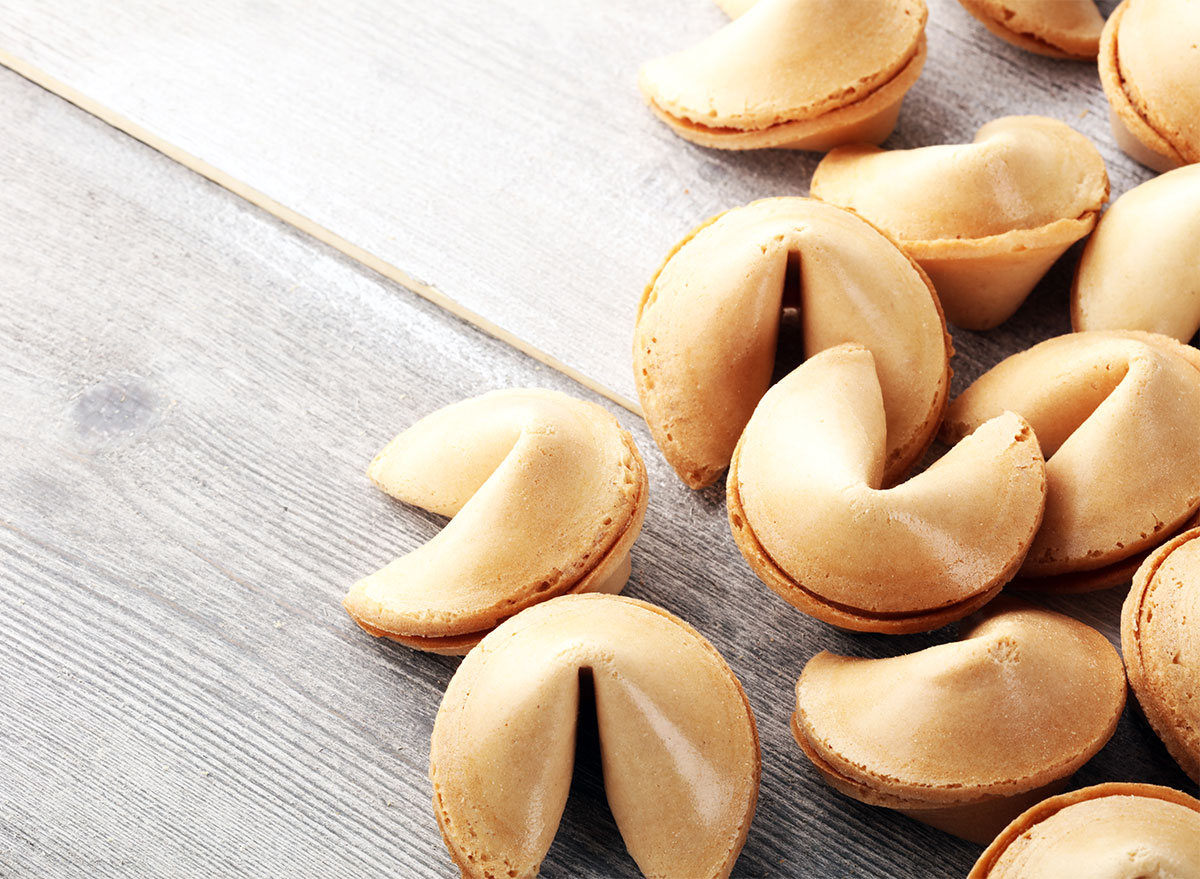

“Your imagination is a great asset” So goes a popular fortune-cookie saying. Imagination was definitely useful to enterprising Japanese immigrants (not Chinese) who popularized the barely edible sugar, flour, vanilla, sesame oil cookies on the U.S. West Coast in the 1900s. The Chinese are more likely to eat slices of orange for dessert, which are considered good luck. Perhaps that’s because of the vitamin C they contain. “Vitamin C helps protect cells and keep them healthy,” says Marie Murphy, a nutrition scientist at the British Nutrition Foundation. The USDA says the typical fortune cookie contains almost 7 grams of carbs and 4 grams of sugars. That’s half of what’s considered one serving of carbs—in one cookie! On your next Chinese dinner out, ask if you can chase your meal with citrus instead.
Read more about your favorite restaurants:
The Best Restaurant Tasting Experiences in Every State
The Best Steakhouse in Every State
Source:









